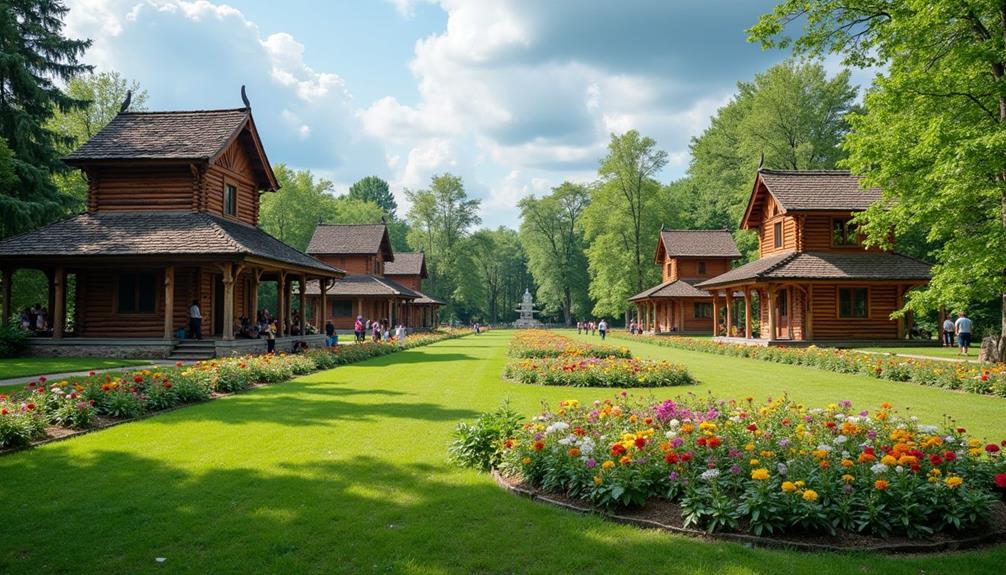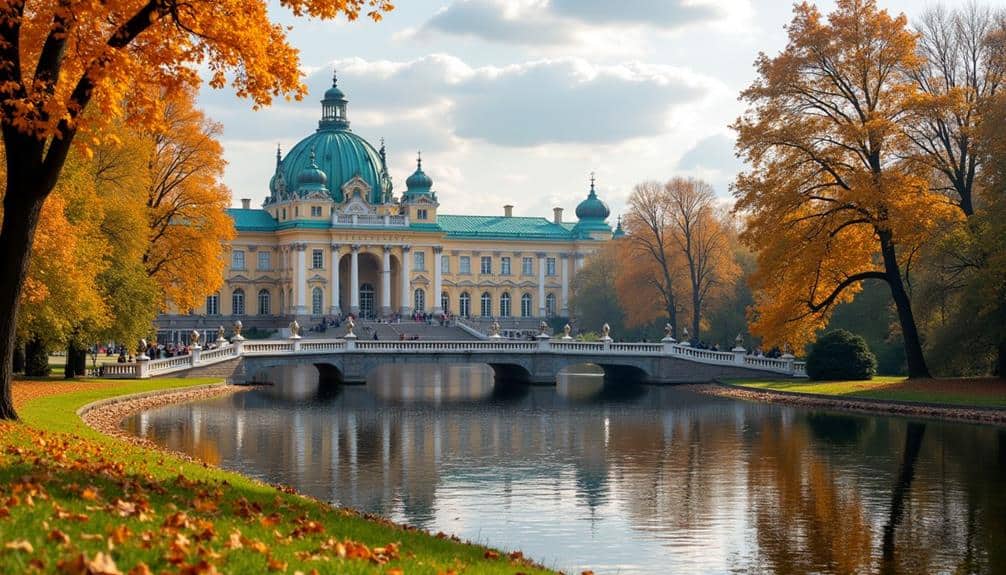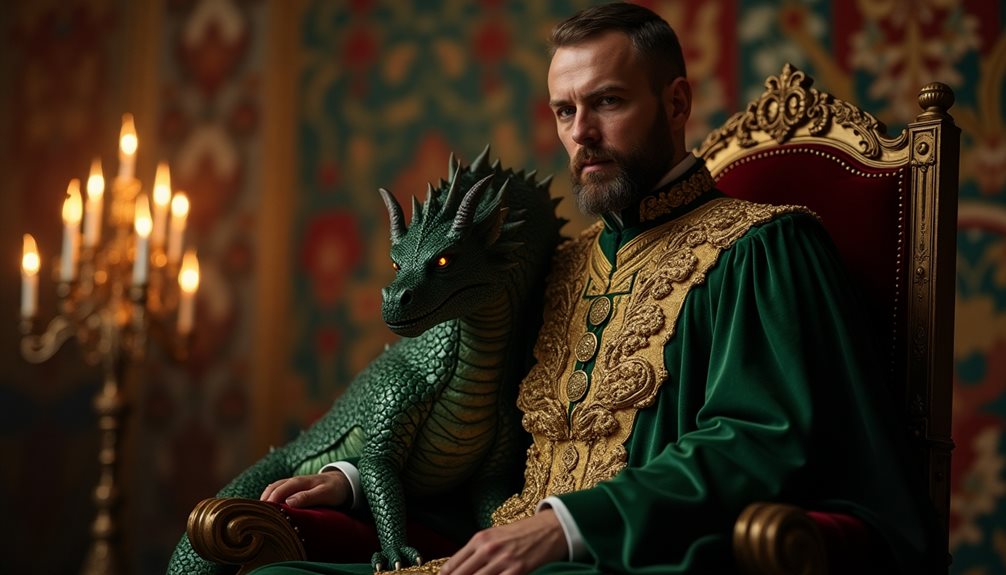Exploring Russia’s parks offers a unique gateway to understanding the nation’s rich cultural tapestry. Gorky Park in Moscow, renowned for its dynamic blend of art and recreation, provides a modern cultural pulse, while historic sites like Kolomenskoye and Tsaritsyno Park immerse visitors in centuries of architectural grandeur. The palatial splendor of Peterhof Gardens and Catherine Park further elevates the experience, juxtaposing imperial opulence with serene landscapes. Victory Park’s monumental tributes and Alexander Garden’s lush expanses add layers of historical significance. As we navigate these cultural havens, one can appreciate the diverse narratives they encapsulate.
Gorky Park, Moscow
Gorky Park, located in the heart of Moscow, stands as a quintessential destination for those seeking a cultural experience intertwined with nature and modern amenities. Renowned for its expansive landscapes and meticulously curated gardens, the park offers a serene escape from the urban hustle while providing a canvas for artistic and recreational pursuits.
Central to Gorky Park’s appeal is its diverse range of attractions. The park is home to open-air cinemas, art installations, and performance stages that host a variety of cultural events year-round. Visitors can immerse themselves in artistic expressions, from contemporary art exhibitions to live music performances, all set against the backdrop of verdant lawns and tranquil ponds.
For those who long for physical activity, Gorky Park does not disappoint. The park features extensive cycling paths, rollerblading tracks, and outdoor sports facilities, ensuring an invigorating experience for all ages.
Additionally, the park’s modern amenities include Wi-Fi hotspots and stylish cafés, making it a perfect blend of natural beauty and urban convenience.
In essence, Gorky Park offers a harmonious blend of cultural enrichment and recreational freedom, making it a must-visit locale for anyone enthusiastic to experience Moscow’s vibrant spirit in a liberating environment.
Peterhof Gardens, St. Petersburg
Often heralded as the “Russian Versailles,” Peterhof Gardens in St. Petersburg epitomize imperial grandeur and artistic splendor. This majestic estate, commissioned by Peter the Great in the early 18th century, seamlessly blends opulent palaces, meticulously manicured gardens, and innovative water features.
As visitors traverse the grounds, they encounter an enchanting array of cascading fountains, gilded statues, and scenic vistas that reflect the zenith of Russian cultural expression.
The Grand Cascade, a spectacular centerpiece, features over 60 fountains and 200 bronze statues, epitomizing the fusion of art and nature. This intricate water system, powered by gravity without pumps, underscores the ingenuity and forward-thinking of its creators.
Beyond the central opulence, the Lower Gardens offer a more tranquil escape, with winding paths and verdant landscapes perfect for leisurely exploration.
Peterhof Gardens provide not merely a glimpse into the past but an immersive experience of Russia’s rich cultural heritage. Whether marveling at the architectural mastery of the Grand Palace or strolling through the serene Marly Garden, visitors are afforded a sense of liberation through the sheer beauty and historical significance of this extraordinary destination.
Kolomenskoye, Moscow

Nestled along the banks of the Moskva River, Kolomenskoye in Moscow offers a compelling blend of historical architecture and natural beauty, making it a must-visit for those seeking a cultural experience.
This expansive estate, once a royal residence, provides visitors with a unique journey through Russian history. The centerpiece is unquestionably the Church of the Ascension, a UNESCO World Heritage Site built in 1532 that showcases striking white stone and an intricate design, embodying the grandeur of early Russian architecture.
The park also houses other significant structures, including the Wooden Palace of Tsar Alexei Mikhailovich, often referred to as the “Eighth Wonder of the World.” This reconstruction of the 17th-century palace offers a glimpse into the opulence of the Russian Tsars, surrounded by lush gardens and ancient oak groves.
Kolomenskoye’s extensive grounds also feature open-air museums, showcasing traditional Russian wooden architecture, and various cultural festivals throughout the year.
For those who crave freedom and exploration, the park’s vast landscapes and historical treasures offer a liberating escape from the city’s bustle. Whether strolling along scenic paths or delving into Russia’s storied past, Kolomenskoye promises an enriching cultural experience.
Catherine Park, Pushkin
A quintessential destination for those seeking an in-depth exploration of Russia’s imperial legacy, Catherine Park in Pushkin is a marvel of landscape architecture and historical significance.
This majestic park, encompassing over 200 hectares, is intricately designed to reflect the grandeur of the Russian Empire. At its heart lies the magnificent Catherine Palace, an opulent Baroque masterpiece that served as the summer residence of Russian tsars.
The park itself is a harmonious blend of meticulously manicured gardens, serene lakes, and elegant pavilions, each narrating stories of bygone eras. Visitors can wander through the French-style Formal Garden, with its geometrically aligned flowerbeds and ornate statues, or lose themselves in the tranquil beauty of the English Landscape Garden, where nature and art seamlessly coexist.
A highlight of Catherine Park is the Amber Room, a world-renowned chamber adorned with amber panels, gold leaf, and mirrors, evoking the splendor of imperial Russia.
For those desiring freedom in their exploration, the park offers ample space and diverse landscapes, inviting leisurely strolls and reflective moments.
Catherine Park in Pushkin stands as a tribute to Russia’s rich cultural tapestry, offering an enriching experience for all who visit.
Tsaritsyno Park, Moscow

Tsaritsyno Park in Moscow is a historical and architectural gem that captures the essence of Russia’s cultural evolution. Commissioned by Empress Catherine the Great in 1775, the park is a representation of the grandeur and sophistication of the Russian Empire.
The centerpiece, the Tsaritsyno Palace, is an architectural marvel designed by renowned architect Vasily Bazhenov and later modified by Matvey Kazakov. The Gothic Revival style of the palace, adorned with intricate details and imposing facades, stands as a symbol of Russian opulence and artistic ambition.
The park sprawls over 405 hectares, offering a harmonious blend of meticulously landscaped gardens, serene ponds, and verdant woodlands. It serves as a sanctuary for those seeking cultural enrichment and natural beauty.
Walking through its expansive grounds, visitors encounter a plethora of historical monuments, including the Bread House and the Opera House, each narrating a unique chapter of Russia’s storied past.
Tsaritsyno Park also boasts a rich cultural program, featuring art exhibitions, classical music concerts, and traditional folk performances.
For those yearning for intellectual freedom and cultural immersion, Tsaritsyno Park provides an unparalleled experience, melding Russia’s historical grandeur with its vibrant contemporary culture.
Victory Park, Moscow
Amidst the urban expanse of Moscow, Victory Park, also known as Park Pobedy, stands as a monumental tribute to Russia’s resilience and triumph in the Great Patriotic War. Sprawling over 2,424 hectares, this park is a living museum of history and culture, offering visitors a profound sense of freedom and reflection.
At its heart lies the majestic Victory Monument, a 141.8-meter obelisk symbolizing the 1,418 days of conflict endured during World War II. The park’s architecture and layout emphasize both solemn remembrance and the celebration of peace, making it a poignant destination for those seeking to understand Russia’s historical narrative.
The Museum of the Great Patriotic War, located within the park, houses extensive exhibits and interactive displays that bring history to life. Visitors are invited to explore the various halls, each dedicated to different aspects of the war, from the home front to the battlefield.
Victory Park is more than a historical site; it is a vibrant cultural space where concerts, festivals, and public gatherings frequently occur. Its expansive green spaces, serene ponds, and sculptures provide a tranquil environment, offering a harmonious blend of memory and modernity.
Alexander Garden, St. Petersburg

Nestled in the heart of St. Petersburg, Alexander Garden stands as a symbol of the city’s rich cultural and historical fabric. Established in 1874, this verdant oasis is located adjacent to some of the city’s most iconic landmarks, including the Admiralty Building and St. Isaac’s Cathedral. The garden’s meticulously landscaped paths and lush greenery provide a serene retreat amid the bustling urban environment.
Alexander Garden is not merely a place for relaxation but also serves as a vibrant cultural hub. Statues and monuments scattered throughout the garden pay homage to significant figures in Russian history, including the statue of Alexander II, after whom the garden is named. Seasonal flowerbeds add splashes of color, enhancing the garden’s visual appeal and offering an ever-changing landscape that invites visitors to explore its depths repeatedly.
The garden’s layout encourages leisurely strolls and spontaneous gatherings, fostering a sense of community and freedom. Outdoor concerts, art exhibitions, and cultural festivals frequently take place here, making it a dynamic space for artistic expression and social interaction.
In Alexander Garden, the spirit of St. Petersburg’s cultural heritage is palpable, offering an enriching experience for all who visit.
Sokolniki Park, Moscow
Sokolniki Park in Moscow stands as a showcase to the city’s commitment to preserving its cultural and natural heritage. Named after the falcon hunting grounds that once occupied the area, the park covers over 600 hectares, making it one of Moscow’s largest green spaces.
This extensive park is not merely a refuge for nature; it is a vibrant cultural hub that offers a myriad of activities and events that cater to diverse tastes and preferences.
For those yearning for freedom from the urban hustle, Sokolniki Park provides an escape into a world where art, history, and nature converge. The park boasts several museums, including the Contemporary Museum of Calligraphy, which houses an impressive collection of modern and traditional calligraphy from around the world.
Cultural enthusiasts can also enjoy open-air concerts, theatrical performances, and seasonal festivals that celebrate Russia’s rich artistic traditions.
Sokolniki’s network of pathways and trails invites visitors to explore its forested areas, serene ponds, and beautifully landscaped gardens.
For the more active, there are cycling paths, sports facilities, and even a skating rink during the winter months.
Sokolniki Park is a representation of Moscow’s dedication to offering spaces where cultural and natural beauty flourish hand-in-hand.




